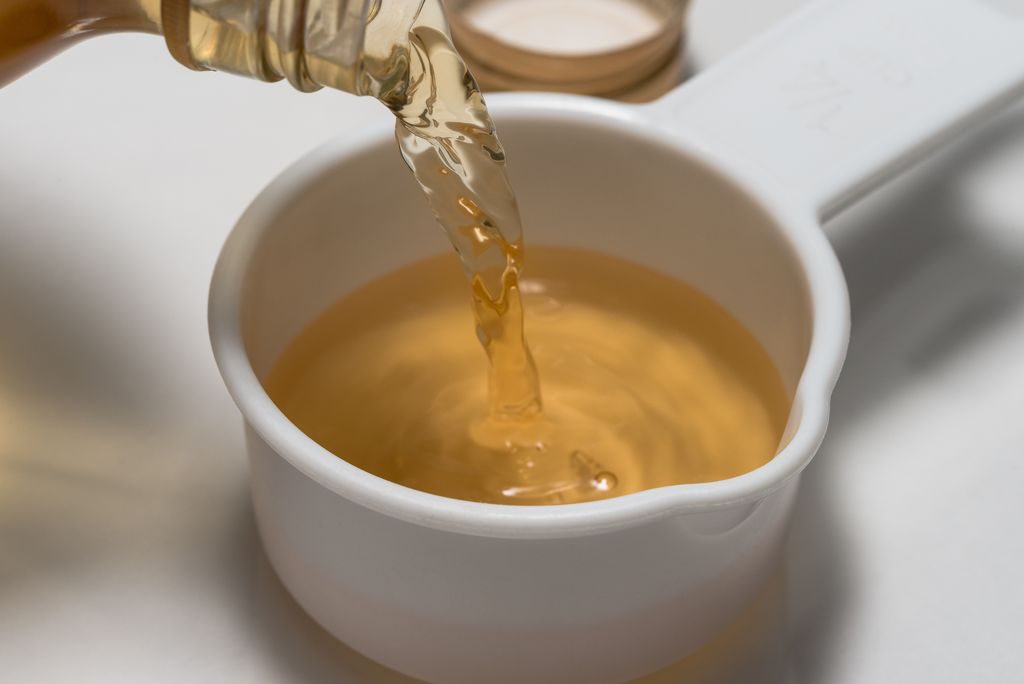White wine vinegar
White wine vinegar is not only a useful condiment for salads or those on a diet, but it is also suitable for other uses in the kitchen.

White wine vinegar, a rather versatile ingredient, is a condiment used a lot in the kitchen among its various uses, the ones in the cosmetic field stand out – especially on the hair – and at home – many use it together with baking soda to clean, disinfect and machine wash.
White wine vinegar, what it is and how it is obtained
White wine vinegar is a yellowish liquid with a sour taste. We all have it in the kitchen, but perhaps not everyone knows how it is produced. This dressing is obtained following the acetic fermentation of the wine thanks to the action of acetobacter, bacteria capable of oxidizing ethyl alcohol inside the wine itself. There are several variants: the red wine vinegar and the apple cider vinegar are the most common.
How to make white wine vinegar at home
Maybe not everyone knows, but it is possible to make white wine vinegar at home. To obtain it, you must start from a quality white wine with an alcohol content of fewer than 12 degrees. The first step is to encourage the formation of the so-called mother. It is a layer that is formed on the surface of the wine and whose appearance is triggered by the cultures of vinegar bacteria. The latter can be purchased, but a homemade method consists in resorting to a piece of sourdough starter together with a spoonful of vinegar to add to the wine. Once the mother has formed on the surface of the latter – placed in a container with a wide mouth – just transfer it to a cool, dark place at a mild temperature for about 20 days, then filter the liquid and store the vinegar in a glass bottle.
Difference between red and white wine vinegar
Both characterized by an acid taste, the nutritional differences between red and white wine vinegar are minimal, as the calories are very similar. The main difference between the two lies in the grapes used to produce the wine from which they come, and in particular its colour.
Properties of white wine vinegar
The properties of white wine vinegar are different. Low in calories – it contains 19 to 100 ml – is the ideal condiment for those on a diet and want to limit your fat intake. Among its virtues, there is also that of increasing the sense of satiety. It does not contain cholesterol and can strengthen the immune system thanks to the content of antioxidants.
Use white wine vinegar in the kitchen
The uses of white wine vinegar in the kitchen are manifold. The first and most common is its use as a dressing for salads and vegetables in general. Among the recipes with white wine vinegar, it is also widely used to prepare sweet and sour dishes,the pickles and the brines for the preservation in the jar of many foods.
Not only that: it is useful to eliminate the smell of fish or onions from your hands and, if added to the cooking water of broccoli, cauliflower and vegetables from the same family, it helps to reduce bad smell in the kitchen.
How to replace white wine vinegar
The alternatives to white wine vinegar in the kitchen are different, especially depending on the dish. In salads, for example, it can be replaced with apple cider vinegar or balsamic with that as well as in some vegetable side dishes. Lemon juice can also be a valid alternative to wine vinegar, both in the dressing of raw and cooked vegetables and in marinades or carpaccio. Finally, soy sauce can be used in second courses based on meat and fish, especially those of oriental inspiration.




